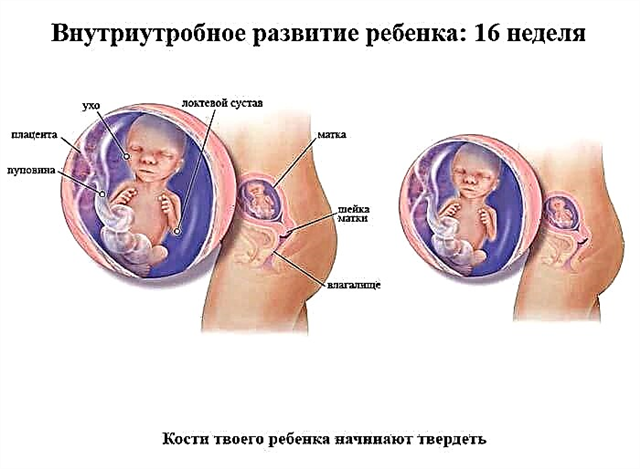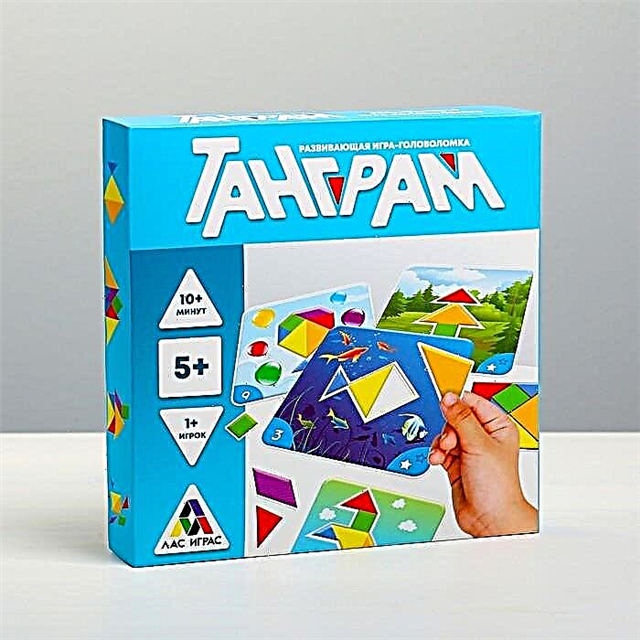Recently, it has become very popular to develop children from the very first months. Since there is demand, a huge number of early development centers have opened, in which you can start studying from 6 months. You can choose any of them, the main thing is that you like the training program.

The approximate development of the child
There are also methods for the independent development of a baby up to a year. If you master them, you can avoid popular developmental mistakes and improve your baby's abilities. The main thing is not to torture him. It is necessary to choose methods for the development of the child that will be interesting to him. Nothing develops like play (even as an adult).
What functions develop in a child up to a year
Up to one year old, the baby develops very rapidly and turns from a small lump that can only eat and cry into a full-fledged child who can walk and can even say a few words.

Infant with an educational toy
Important! Each child is individual, some functions may develop in a non-standard order. Therefore, if the crumb does not fit into the standards, it's okay. For example, some toddlers learn to walk without ever learning to crawl.
TOWhat functions a baby develops up to a year:
- The first month is the presence of only a few basic reflexes. Usually children of this age eat and sleep for the most part, but can also smell milk.
- The second month - the baby learns to focus on toys, suck his thumb and hold his head. At this time, a revitalization complex appears - a positive reaction of the baby to the appearance of an adult.
- The third month - the baby already knows how to smile, and also begins to walk. That is, this age is the beginning of speech development. During this period, the baby also knows how to lean on the arms, keep his head in a prone position. In the third month of life, the baby can already fix his gaze on the faces of adults, listens to intonations. If held by the handles and placed on a flat surface, he may even try to take his first steps. It is still very far from the real steps. This reflex is an important sign that your baby will learn to walk in the future.
- Fourth month. During this time, emotions become more varied. Laughter can be added to a smile. In addition, the baby may try to support the breast while eating. Also, the baby really likes to play with rattles. If you let the baby hold on to the thumbs, he may even try to sit down from a prone position.
- In the fifth month, the baby already knows how to distinguish members of his family from other adults, to take and push away toys. If you support the child with the arms, it can even lean on the legs quite well. Often at this age, the first babble begins to form, which is expressed in the pronunciation of individual simple syllables. There is not a single thing in the surrounding world that would not be able to interest a four to five month old baby.
- Six months. Usually children by this age can already roll over from their backs onto their stomachs and try to crawl. If a child is spoon-fed, he is able to eat like that. Some babies have their first tooth.
- Seventh month. Here the child discovers a new way of knowing the world - crawling. At this age, you can give your baby a walker. If a seven-month-old hears the name of a familiar object, he may even turn his head in his direction.
- At the eighth month, babies can stand on their own in the crib, holding onto the walls (or other support). In their arsenal, any item becomes a toy. Actually, this is the time when you can give the baby some kind of developmental toy (for example, a pyramid). At 8 months old, you can hear the first word from the child (which, however, will not be realized yet).
- In the ninth month, the baby tries to walk on his own, holding onto a support, or with the help of his parents. The questions that are asked to him, the kid is able to understand, and you can also hear from him how he repeats the syllables for adults.
- Ten months. The time when the baby begins to actively imitate adults.
- At eleven months, a toddler may have little vocabulary. Some children learn to walk, dress, and find objects in the home on their own.
- Finally, a one-year-old child can already know 10 words and learns new ones. At 12 months, children are able to drink from a cup on their own, as well as bring various items if their parents ask them to.

The child develops
Important! At this age, you can already start basic music education (listening to melodies).
What is early development methodology
The early development method is a complex of methods, techniques and exercises aimed at quickly teaching a child up to 1 year old. It is important to understand that no such technique is capable of creating a miracle and making a child speak at 4 months. Some parents are too addicted to early development techniques, driving the baby into extreme stress.
Worth remembering! In the first months of life, information oversaturation sets in very quickly (especially in the child's psyche up to a year old), which can cause health problems, sleep problems, and a loss of interest in various activities.
Basic techniques
There are a huge number of methods for early child development up to a year. None of them can be applied 100 percent of the time. There is also no universal technique for teaching an infant. The most popular are the following.
Cecile Lupan technique
Cecile Lupan was a follower of the Glen Doman method, which consisted in a purposeful, systematic introduction of the infant to the basic concepts depicted in the form of pictures on cards. Cecile Lupan brought emotion to this method as she believed that learning should be fun for the little one.

Child development
She has developed a system of exercises and games aimed at developing different skills of the child. To get acquainted with her, you must read her book "Believe in your child." This technique is intended for the development of infants and children under 7 years of age.
Masaru Ibuka's technique
Masaru Ibuka is a Japanese engineer who became interested in age psychology and child development methods after his son suffered a serious illness, as a result of which he developed mental retardation. He consulted for a long time with all possible specialists on how to improve the cognitive functions of his child, which as a result led to the creation of his own method.
It is based on the idea that the formation of a child's brain is almost completely completed before the age of 3. Therefore, if the foundation is not laid before that time, it will be much harder (if not impossible) to catch up. Therefore, he focuses on the all-round development of a baby up to 3 years old.
Basic principles of the method:
- The main influence on a child's abilities is not provided by genetic characteristics, but by the environment in which he developed. Therefore, the work of parents should be aimed at providing it.
- The purpose of this developmental technique is to develop a person who will be truly happy. It does not set itself the goal of making a person a child prodigy, but through a sense of inner harmony to promote the growth of the most creative in him.
- Memories from childhood play a very important role in the formation of an adult personality.
- Children should not be criticized for negative emotions, especially anger. It is necessary to understand what is behind these conditions. That is, it is necessary to fight not with the effect, but with the cause.
- The emphasis should be on mothering at an early age, although the father should also give a lot of attention to the baby. According to Ibuka, a father can raise a genius, but only a mother can form the necessary moral qualities in a crumb.
- The presence of grandparents in the house is encouraged, as well as communication between children. In his older age, Masaru encouraged quarrels between small people, since for them these are the first lessons in resolving conflicts.
Important! To apply the technique, you need to focus on the interests of the baby. At the same time, Masaru Ibuka himself said that there are no universal recipes for raising a child, only a mother can find an individual approach to a baby.
Maria Montessori Method
This method is one of the most popular. Its basic idea sounds like this: you need to follow the interests of the baby and help him to independently solve life's problems. In turn, the adult tries to interest the baby by creating a developing environment.
Self-study tips
Nature has already put mechanisms into the child, thanks to which he will become more and more developed. The task of parents is not to let them fade away. Therefore, you need to try to notice all the cognitive needs of the baby in time and quickly satisfy them.
Important! It is also important to ensure the formation of developing conditions that can characterize the development of the crumb by 50%.
Common mistakes in home teaching
The biggest mistake parents make in teaching a baby is trying to rush things. Children develop individually. You need to regularly examine the baby with a pediatrician, who will check not only the physical, but also the mental development of the child.
Thus, none of the techniques described above can be applied independently. You should also not act blindly. All the authors of the above techniques say that only a parent can know better what can stimulate the development of the baby. Teaching a baby is a creative skill where there are no ready-made templates and examples.



